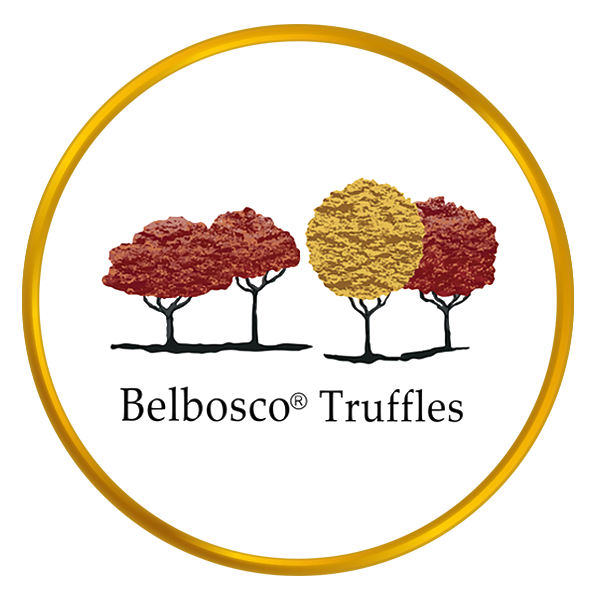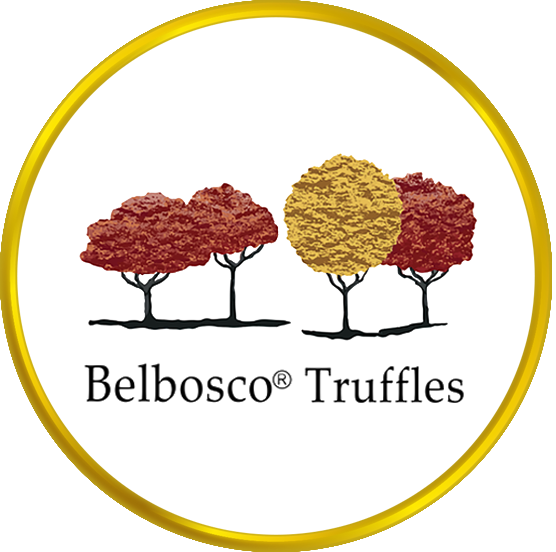What Is A Truffle?
Truffles are one of the rarest and most sought after culinary delicacies.
The truffle is a type of funghi or mushroom which grows entirely underground. It is part of the larger taxonomical genus of “tubers”. Truffles rely upon animals to reproduce. These animals ingest the flesh of the truffle and naturally distribute the truffle spores throughout the soil.
Truffle spores are nourished underground, next to the roots of their “host” plants – which in most cases consist of various varieties of trees. Truffles have a unique, symbiotic, relationship with their “host” trees. They create a nutrient exchange through a very fine root system which grows between the truffle and the larger roots of the tree. This root system allows both the truffle and the host tree to exchange essential nutrients so that each can benefit and grow. The truffle takes necessary sugars from its nearby host tree – nutrients which it cannot obtain by itself because it does not undergo photosynthesis. Likewise, the host tree obtains necessary nutrients which the truffle absorbs from the soil through its spores.
Truffles are rich in proteins and minerals like potassium, calcium and magnesium. They are a wonderful “health-food” and a source of various important nutrients.
Truffles prefer to grow in temperate climates and in soils high in clay and/or calcium content. Their gestation period varies between 5 and 8 weeks, depending upon the type of truffle. Also, the shape, size and flavor of each truffle varies as per the species of truffle and the particular environment within which that truffle grows. Each variety of truffle has its own growing season during the year.
In general truffles are found and not cultivated, although in recent years the Black Winter Truffle has been cultivated on truffle “farms”
in certain regions of France and Australia. For the most part, truffles are found in nature by truffle hunters and their dogs in secretly guarded forest locations. Truffles are almost impossible for us to detect underground. Because of this these dogs, with their highly acute olfactory sense, have been trained to locate the unique truffle aromas which are hidden to us underground.
The pungent aroma of truffles comes from their spores which are protected under the soil from the elements. The aromas and flavors of truffles are many and are variously described as suggesting freshly tilled earth, garlic, honey and exotic spices.
Truffles are one of the rarest and most sought after culinary delicacies.
The truffle is a type of funghi or mushroom which grows entirely underground. It is part of the larger taxonomical genus of “tubers”. Truffles rely upon animals to reproduce. These animals ingest the flesh of the truffle and naturally distribute the truffle spores throughout the soil.
Truffle spores are nourished underground, next to the roots of their “host” plants – which in most cases consist of various varieties of trees. Truffles have a unique, symbiotic, relationship with their “host” trees. They create a nutrient exchange through a very fine root system which grows between the truffle and the larger roots of the tree. This root system allows both the truffle and the host tree to exchange essential nutrients so that each can benefit and grow. The truffle takes necessary sugars from its nearby host tree – nutrients which it cannot obtain by itself because it does not undergo photosynthesis. Likewise, the host tree obtains necessary nutrients which the truffle absorbs from the soil through its spores.
Truffles are rich in proteins and minerals like potassium, calcium and magnesium. They are a wonderful “health-food” and a source of various important nutrients.
Truffles prefer to grow in temperate climates and in soils high in clay and/or calcium content. Their gestation period varies between 5 and 8 weeks, depending upon the type of truffle. Also, the shape, size and flavor of each truffle varies as per the species of truffle and the particular environment within which that truffle grows. Each variety of truffle has its own growing season during the year.
In general truffles are found and not cultivated, although in recent years the Black Winter Truffle has been cultivated on truffle “farms”
in certain regions of France and Australia. For the most part, truffles are found in nature by truffle hunters and their dogs in secretly guarded forest locations. Truffles are almost impossible for us to detect underground. Because of this these dogs, with their highly acute olfactory sense, have been trained to locate the unique truffle aromas which are hidden to us underground.
The pungent aroma of truffles comes from their spores which are protected under the soil from the elements. The aromas and flavors of truffles are many and are variously described as suggesting freshly tilled earth, garlic, honey and exotic spices.

